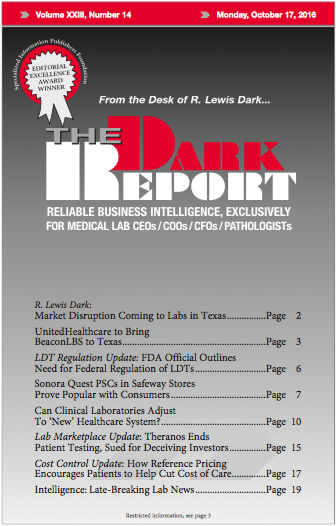CEO SUMMARY: Month by month, there is increased clarity in the path the American healthcare system will follow as hospitals, health systems, and physicians integrate clinical care, manage populations, and practice personalized and precision medicine. While these changes play out, clinical labs and pathology groups will need to align their diagnostic services to meet the …
Can Clinical Laboratories Adjust To ‘New’ Healthcare System? Read More »
To access this post, you must purchase The Dark Report.


